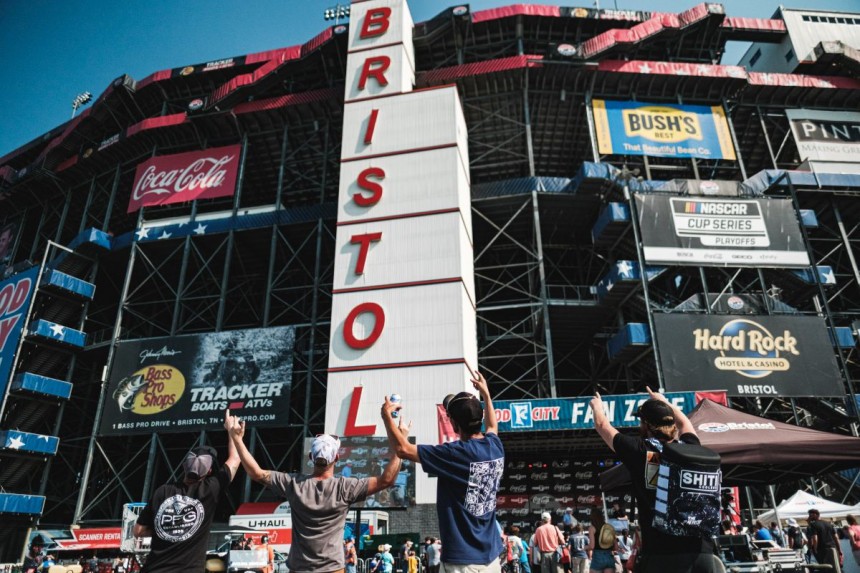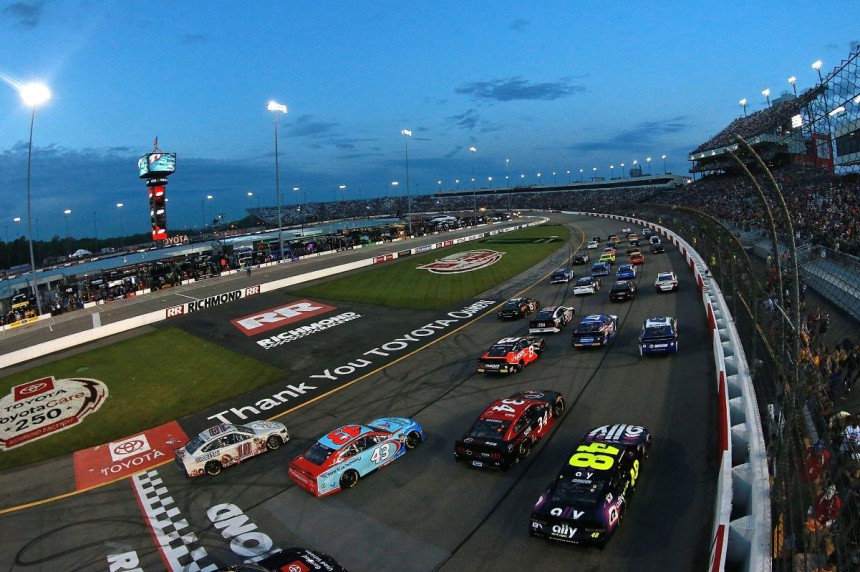It’s no secret that NASCAR’s popularity has dropped significantly since its peak in the mid-2000s. And one of the main reasons for that is the low number of short tracks in use. After all, they are behind the most exciting races in recent times.
Ideas for remedying this problem run the gamut between sensible and absurd, making it more about entertainment than actual racing. NASCAR has tried everything from holding street races in the middle of major, important cities to attempting all types of underwhelming events to attract more fans. However, if you ask fans what should be done, one suggestion that always comes up, regardless of color, age, race, creed or any other fan category, is that we need shorter tracks . It’s basically the one thing that NASCAR fans can all agree on. Plus, this type of circuit really makes sense.
Technically, a short track is any oval track less than a mile in length. As a result, start-up costs are relatively low. A smaller space means less money will be needed to pay for maintenance and property taxes. Additionally, short tracks almost always provide a good spectacle from a racing perspective. But why, you might ask? Well, for a very simple reason.
Think about it, less space means more contact, and NASCAR has always been one of the few motorsports where intentional and unintentional contact is not only tolerated but actually encouraged. And proximity means no driver can stray too far from the others, so there’s always something happening.
But the main problem is that attendance is declining on these slopes. The NASCAR Cup Series currently only runs on three types of tracks, which are pretty small, and some of them look abandoned, to be honest. Additionally, another major problem is that all three short tracks are competing for the same group of people in the Tennessee/Virginia area. When you have other important events at the same place, of course no one will show up. Showing up to three, four, or even more different events is a challenge because NASCAR is quite expensive, even if you’re local and don’t need to camp or find a hotel. Worse still, these three circuits organize their races consecutively three weeks in a row for the spring races.
As NASCAR built many new tracks in different areas of America, they saw the opportunity to have six-figure attendance numbers at major circuits. As a result, the road ahead was long and long. Additionally, officials were pushing to make this competition more civilized at that time. Teams and sponsors didn’t want to beat and bang hot guys. Instead, they opted for talented athletes making crisp passes with skill rather than muscle.
Racing on these new tracks was mediocre at best most of the time. Cars were moving too far away from each other for any action to occur, and as cars became more aerodynamically dependent thanks to new technological advances, this only made the problem worse. At that time, no short tracks were built because they were considered relics of the past, and everyone wanted the new super speedways which were some of the greatest sporting venues ever built in history. “Fun” fact, the last time an entirely new short course was added to the official schedule was in 1970, when the Albany-Saratoga Speedway hosted two races.
Since then, we have cut back on this type of circuit. From 1972 to 1984, five short films were on the program. Amusingly, the other two extra seats are right next to the other three we were talking about earlier. Additionally, the only two possible candidates for adding new short tracks to the competition schedule are Nashville and North Wilkesboro, which just got the green light for major renovations.
Rising prices have not improved things. If you think about that, NASCAR has always relied on a thriving middle class to show up to the races. For most people, the cost of attending two or three races a year was reasonable. But that was in the 90s. Nowadays, the price of a ticket is too high for ordinary people and it is simply not worth it. However, these things are more about politics and the disappearance of specific middle class jobs and so on. We won’t go into these details, but it is a fact that attendance is down in all major sports in the United States because the prices are too high.
Plus, when NASCAR built all these new tracks in big markets in the 1990s, it was because they saw the writing on the wall. People moved to large and important cities, where they could take advantage of certain opportunities. NASCAR had bet that these people would continue to come to the races, but as we see now, they were wrong. The competition simply doesn’t appeal to metropolises because its heart and soul are in small towns. For example, almost all drivers of the previous generation came from very humble beginnings, representing ordinary people doing very unusual things.
This season, NASCAR held the Busch Clash on a temporary short track built inside the LA Coliseum. The race has received excellent reviews and is set to host the event again in 2023. Perhaps stadium racing is the answer for the future.
With the geographic and economic issues facing the NASCAR Series Cup short tracks, finding a solution is difficult, and these types of tracks could disappear in the near future.



